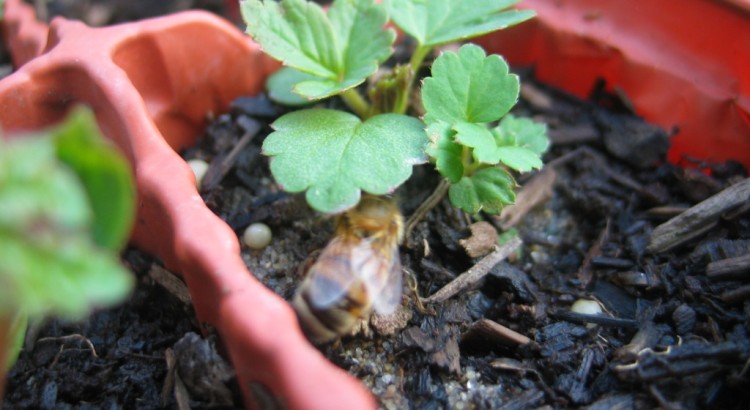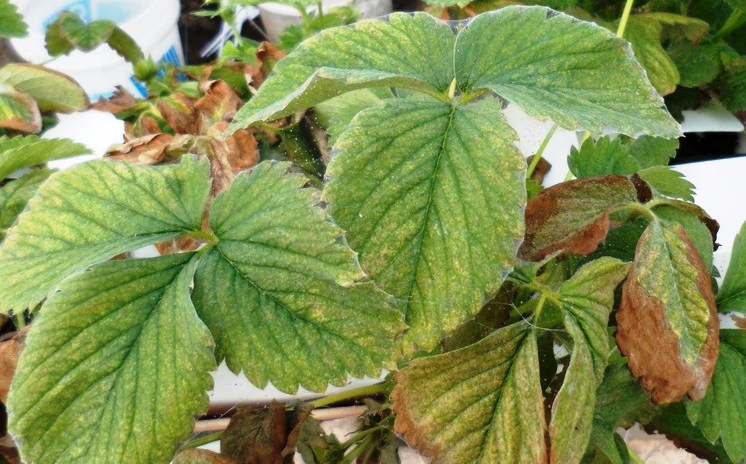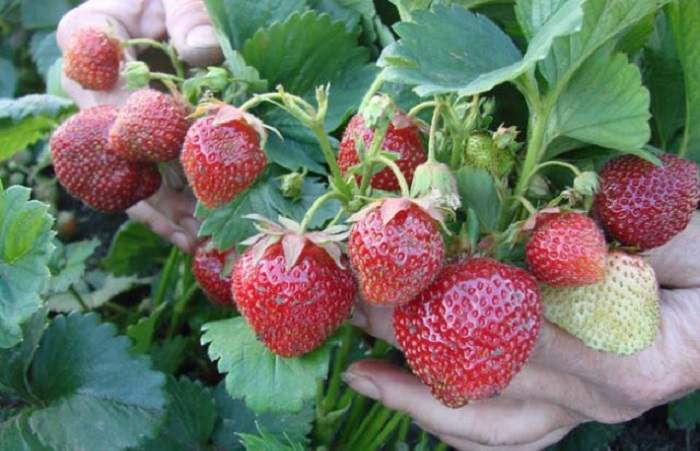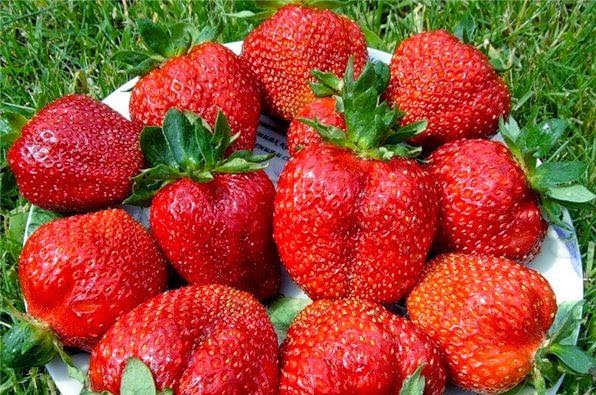What are the pests of strawberries and the fight against them
Content
Features of the berry
Strawberries are a perennial berry crop that grows in small bushes on almost any fertilized soil with proper care. It is propagated most often by rooting a mustache, and then transplanted to the right place.
This delicious pulp, which we call a berry, is really just an incredibly overgrown stalk, and the real fruits are the little seeds that grew on it. Strawberries contain a lot of sugars, organic acids, salts of various metals, vitamins and microelements, not only in the "berry" itself, but in the leaves, stems - the entire aerial part. Maybe that's why so many pests want to feast on it. Although growing strawberries does not require special care, you need to be very careful not to miss the appearance of pests or diseases that can nullify all the work.
We fight pests
Centipedes, slugs, snails, ants, nematodes love to feast on sweet berries so that in shaded areas, despite leaving, they can ruin the entire harvest. Ticks, aphids, weevils, thrips prefer leaves and stems, because of them there may be no berries at all, if you do not fight them.
Already in spring, on young bushes, you can often see leaves curled up in a tube, covered with spots, dark or white spots, fluffy growths appear on the leaves and fruits. All this is evidence that pests have started in strawberries, urgent action is needed.
Mites
Ticks often live on bushes. During the summer, the strawberry mite replaces five generations that feed on the sap of plants. He can bring healthy bushes to dryness. The female of the strawberry mite, hibernates at the base of the leaf, lays her eggs on it in the spring. Larvae, and later adult animals (up to 3 mm in size) suck the juice from the leaves. Then they move to the growing mustache, travel along them throughout the site, leaving behind emaciated dried plants. They feel best in a densely planted garden bed. They come to the garden, as a rule, with seedlings.
To protect your strawberries from this dirty trick, you need to carefully examine the acquired planting material, at the slightest suspicion of infection with a strawberry mite, heat treatment of each plant. To do this, the bush must be held in hot (up to 45 degrees) water for at least 15 minutes, then cooled and dried. You can apply the disinfection of seedlings with Karbofos: lower the plant to the root collar in the emulsion for a few seconds, leaving the root dry.
To prevent the tick from taking root, you need discreet watering. And in the spring it would be good to water the plants with hot water a couple of times. This is the compulsory care for strawberries. Even if you do not know for sure that there is a strawberry mite on the bushes, in the spring you can spray the entire area with an infusion of garlic or onion peels.
The spider mite does not feed on berries or greens of strawberries, moreover, it hunts other insects that wander on it, but it does no less harm.The fact is that it braids a plant with a thick web and lives in this cocoon, preventing the sun's rays from reaching it - photosynthesis becomes impossible and the plant dies, usually this happens immediately after the fruit ripens. Karbofos helps to get rid of it. If you want to defeat ticks without chemistry, you need to carefully consider the bushes, starting in spring, pick off the affected leaves, wash them with onion broth, which is their care.
Video "Strawberry Protection Against Disease"
Aphid
It is difficult to find a plant in the garden that could not be harmed by aphids. She attacks vegetables, berries, fruits, she likes to settle on small bushes of strawberries, large bushes of tomatoes, cabbage leaves, trees. In spring, and especially in summer, you can see it on young strawberry leaves; it comes in different colors: yellow, green, red, black. Aphids harm the strawberry all the time it grows, secretes an astringent, which interferes with the development of fruits, transfers all sorts of diseases.
Other insects support the fight against aphids: golden-eyed, ladybugs, but chemical preparations, for example, Lirimor or Decis, will help to completely get rid of it. Insecticides destroy not only pests, so it is better to turn to folk methods of dealing with aphids. The most common are a solution of household soap and an aqueous tincture of garlic with onions. Repeated spraying, inspection of plants, destruction of infected leaves will certainly lead to victory.
Black and gray rot
Fungal diseases are dangerous for strawberries, they are carried by wind, rain, and it is difficult to protect themselves from them. Gray and black rot lives on plant remains and can thrive and spread in damp, cool weather. This is facilitated by dense thickets, too abundant watering, leaves or fruits lying on the ground. It looks like a soft gray (black) bloom, affects all parts of the plant, leads to the point that the berry becomes inedible, the whole plant dies. If you touch this bloom, fine dust will fly - these are spores that easily spread throughout the entire area.
To protect the strawberries from rot, the soil is spilled with an infusion of ash before planting in the spring, the bushes themselves are sprayed with nitrophene in the spring. During the period of growing leaves, flowering, strawberries need to be treated with boric acid, manganese. These are very useful measures for caring for plants - fighting rot plus feeding.
Prevention of infection
Proper care, timely feeding, and compliance with the rules of crop rotation will help prevent strawberry diseases. Starting in spring, it is necessary to monitor the plants, remove spoiled leaves, avoid plant debris, and mulch the soil under the leaves. Caring care involves thinning the bushes, moderate watering, spraying with infusions of onions and garlic. The same onion or garlic planted between strawberries repels pests well. Top dressing should be strictly thought out, because too much organic matter, for example, also contributes to plant diseases.
Video "Biological products for pest control"
To understand how to protect your garden from pests, we recommend watching the following video. Top dressing and care is a secondary topic of the video.





